The songs
Bonjour l’hiver is performed by children’s performer Charlotte Diamond. It comes from her 2005 album with the same name, and includes lyrics and instrumental versions of each song so that kids can karaoke the song. Charlotte, and her accompanist at the time, Paul Gilitz, wrote it in 1992 when she lived in Richmond BC where she was born. Since then she has moved to Sechelt, a ferry ride north of Vancouver on the Sunshine Coast of BC. Actually, it is the first in a cycle of four songs using the same melody in which children greet each season. Each song can be sung in both French and English. Lyrics for all four songs in the cycle are here. The English lyrics for this winter one are:
Hello winter, how are you today?
I'm so glad that you have come my way.
Hello winter, say you're looking fine.
Won't you have a cup of tea and join these friends of mine.With your icicles on bicycles riding in the snow
Snowflakes falling tickling my nose
Sleigh rides let's go skating round and round
I'm so glad that you have come to visit in our town.
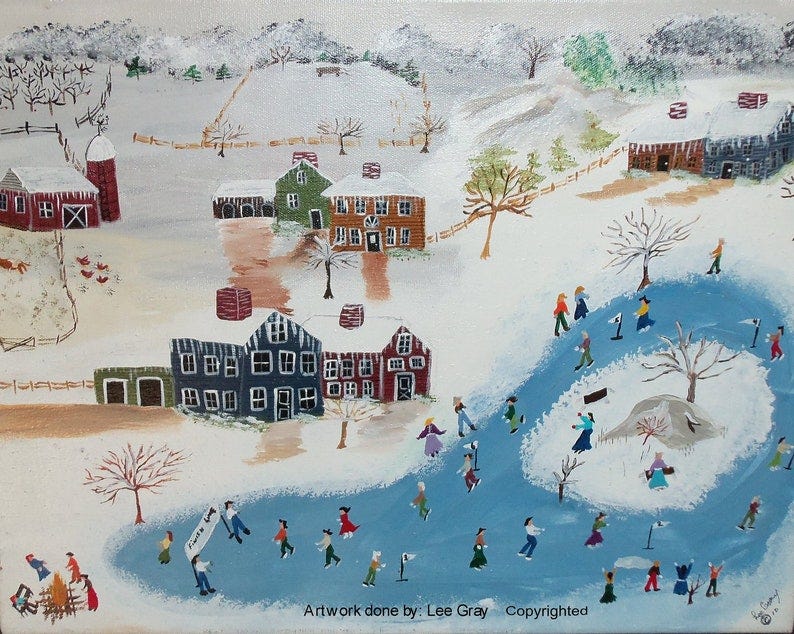
A Children’s Winter was written by the late Dermot O’Reilly (1942-2007), member of the Irish-style Newfoundland folk music trio Ryan’s Fancy. They specialized in traditional nautical, drinking and Irish folk music, as well as original songs. Ryan’s Fancy recorded 12 albums while they were active from 1971-83.
This song has become a regional Christmas season classic in Canada’s Atlantic provinces and there are a number of YouTube videos of it posted, mostly from that region. This recent one by a face-masked and pajama-clad children’s choir is quite touching, and in this 1973 video montage Dermot O’Reilly himself sings it.
I have chosen this rendition by the Halifax-based duo Campbell + Green, from their recently-released EP Christmas music album, available for download here. Husband and wife singer-songwriters, they are Robert Campbell and Cailin Green. You can watch a video of them singing a somewhat faster version of the songthat they recorded a few years ago here. Here are the lyrics.
Essay: Reminiscences of my winters as a child [word count 2020]
The following are memories from my elementary school age childhood in the 1950s, before I became a teenager. I grew up in the suburbs of St. Paul, Minnesota, where winter is reliably very cold indeed. In recognition that the following account may seem overly-romantic, I should first acknowledge that I know there were many, many times when I was cold, wet and miserable during the winter, and was eager to get back to my warm home. But those memories have gotten dim over time compared to these fond recollections.
Considering that today I do not consider myself to be an outdoorsy person it seems odd that most of these memories of childhood life in wintertime involve outdoor activities. I can’t really remember very much about what I did indoors at this time of year. Probably that was because most of that would have been much like what I did indoors during the rest of the year, including board games, listening to top-40 pop music on my portable 5 transistor radio, or to other more exotic fare from far-off places on my shortwave tube radio. I also liked building plastic kit models of boats and airplanes, and spent lots and lots of time reading and watching TV. On evenings before school days I squeezed in my homework and got it over with as quickly as I could.
One distinctive indoor winter activity that I do I remember is cutting paper snowflakes and sticking them to the windows using heating’s magic winter glue – condensation. I also enjoyed the view through the windows when it was snowing or had recently snowed, especially when it was dark outside. The falling snow, or having my familiar landscape draped with the stuff lit by streetlights or the moon, could appear magical.
But I cannot remember ever going for a walk to enjoy that magical world. Perhaps it was because of my daily one mile treks to and from school that I thought of walking as a means of transportation, not recreation. (I’ve told my own children that going to school involved tunneling through the snow every day uphill in both directions, but that is a slight exaggeration.)
We had windows in the upstairs, where we children had our bedrooms, and they provided a different kind of entertainment. We did not have double-glazed windows in those days. In the autumn my father would put up outer storm windows on the first floor and replace them with screens in the springtime, but these upstairs windows were too high for my father to risk doing that. So those upstairs windows spent much of the winter etched with beautiful patterns of frost. I remember our bedrooms as having been cold in wintertime, but in retrospect, having memories that last a lifetime of that beautiful frost may have made it all worthwhile.
I was an active little cowboy until about grade 3, but that was not possible in winter. My mother was very strict about not running around indoors, and for some reason she did not like the lovely loud Bangs! or pungent delightful smell that came from my cap gun. So dressing up in my cowboy boots, chaps, vest, and Davy Crockett coonskin cap (made from a real racoon!) to play cowboys and indians was out of the question. Both boys and girls played that game and that is what we called it. But no one was ever a faux Indian, and I can’t remember anyone ever identifying as being a bad guy. We were just a bunch of miniature cowboys and cowgirls running around shooting each other for no particular reason.
Playing the game outdoors in winter was not very practical either since in the cold the gun would only make a small snapping sound instead of a satisfyingly loud Bang!. More importantly, the freezing cold would quickly make my metal cap pistol very uncomfortable to hold bare-handed, and I could not shoot it while wearing mittens.
Bundling up for the weather is a part of every Minnesotan’s winter, and preparing to go outdoors was time-consuming. Besides mittens, dressing properly involved long underwear, layers of sweaters or other insulating clothing, a stocking cap (toque), and a wind/water resistant outer coat. Everyone wore black winter boots that would buckle up after you put your shoe-covered feet in them.
The mittens (I can’t remember ever wearing gloves as a child) often needed to be taken off to accomplish simple tasks like snapping, zipping up, or searching for something in your pocket. To keep them from getting lost our mothers either clipped them to the ends of the sleeves of our coats or attached together with an “idiot string” that ran up the arms of the coat and behind your back.
My outdoor play was mostly during the short daytime on non-schooldays, and during lunch recess and after-school-but-before-supper on schooldays. I went to Holy Childhood School, our Catholic parish school where we were mostly taught by nuns. During recess I remember playing a rather rough game in the snow-covered church parking lot in which two sides, boys and girls, would try to get a basketball into the other team’s goal, which were between the two posts holding each basketball net.
A player would run with the ball until tackled or dragged down to the ground. He or she then had until the count of three to try to throw the ball to a member of the same team. While counting, the opposing team players hovered over waving their hands and reaching for the ball. The ball ended up going somewhere, then someone grabbed it and tried to run in the right direction, and the process began again.
Once a recess-supervising nun tried to stop our game because she thought it was too rowdy. But we told her we were playing rugby, and indeed our game may have been inspired by having seen real rugby with its confusing rules on a then very popular TV show called Wide World of Sports.
I don’t know if nuns ever watched TV, but she bought our story that it was a real game and she allowed us to keep playing. We were so bundled up in our winter clothing that we were better protected than real rugby players. I can’t remember anyone ever getting seriously hurt, although bleeding noses were common in the dry winter air.
The nuns were dead set against snowball fights, so that never happened on the playground after we got caught. After hours, such clashes could break out among boys and girls any place and any time if the snow was wet enough. It was the wintertime equivalent of playing cowboys and indians, and both boys and girls played snowball.
We all abided by the unwritten rules that balls that hid ice or rocks covered in snow were not allowed, and you never threw snowballs at kids that were a more than a year or two younger than yourself. Sometimes we would organize into teams and build snow forts. It was considered bad form (but was very satisfying) to hit someone in the face with your snowball.
When I was very young, my outdoor recreation world was our yard and the yards of the other kids who lived in my block. The front yards, including ours set well back on busy Larpenteur Avenue, were great places for making snow angels and snowmen. The small backyards could be used for that too, and they had the advantage of being more private and protected from the wind. I was the oldest kid near my age who lived in our block, and the others were mostly girls. I wonder if anyone ever figured out who made those little yellow holes in the snow?
When I was very young and just learning how to skate my father flooded a large area in our adjoining vacant lot to make a skating rink. I just checked with my sister Michele, who is 1½ years younger than me, and she cannot remember that homemade rink at all, so we must have only had it for a year or two. That is not surprising because with the frequent snowfalls an ice rink required frequent shoveling.
As I grew a little older, perhaps seven years old, my skating world expanded to an outdoor public skating rink about four blocks away on a wide boulevard at the side of busy Snelling Avenue. I don’t know who set up and maintained that facility, but it was free to use and had floodlighting as well as a semi-heated shed to lace up our skates and/or take a break in the relative warmth.
Despite there being that shed, both Michele and I remember sometimes walking the four blocks to the rink already laced up in our skates (probably with help from my mother because I was a slow-learner when it came to tying shoes) with the blades covered by their plastic guards. Neither I nor Michele remember ever having been driven to or from that skating rink by our parents, but we both remember walking to and from it in the dark. Allowing young children go that distance by themselves, especially in the dark, may sound like irresponsible parenting today but that is how it was in the 1950s.
One end of the rink was for hockey and the other end was for figure skating. All of the girls had white figure skates and they never played hockey. Again, things were different in those days. Michele tells me that it never occurred to her to play hockey.
All of the boys had black or brown hockey skates. We always wanted to play some variation of that game instead of twirling around in silly circles. There was no line separating the two sides of the rink. Michele remembers the girls being interrupted by errant hockey pucks and having to be careful not to get crashed into by game-focused boys who skated onto their side of the rink.
I suppose that there may have been some kind of scheduling system that I am not remembering that reserved times for adult and teenage hockey playing and figure skating. Or maybe they had another facility further away that I never needed to know about, or played in the latter part of the evening after little kids’ bedtimes.
Our hockey was always pickup, not organized into leagues or otherwise supervised by an adult. In this wider world outside my own block I was no longer the oldest kid and I wasn’t really that good of a skater. I was often made goalie in our pick-up games, a position that I liked to play and few others did. Our bundling up for winter turns out to have had another advantage besides keeping us warm. I can’t recall any goalie ever feeling a need to wear other protective equipment. Aiming a shot higher than the knees was another unwritten rule.
Neither Michele nor I can remember ever using an indoor ice skating rink when we were children or teenagers.
About a mile from our house was Como Park. It included a free large conservatory that was a warm winter oasis of beautiful flowers and exotic tropical foliage. The park also included a golf course which provided our closest hills for sledding and tobogganing. Sometimes our parents would drive us there but I can also remember walking to it pulling my sled or our toboggan.
The golf course included one particular hill with a long steep incline that quickly flattened out onto a fairway at the bottom. Some places were steeper than others, and in some places you would get airborne before hitting the flat fairway. Only true daredevils were brave and/or foolish enough to attempt sledding there.
I was one of the foolish ones, although I never could go down those steepest slopes when my parents were around. Even so, I am sure that my parents believed that it was only because of their prayers that I survived my childhood.
Of course, there is an elephant-in-the-room regarding what childhood winter was like for me – the run-up to Christmas and the great day itself. I’ll give you my reminiscences of that aspect of the midwinter season on Thursday.






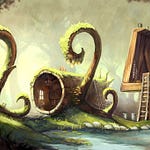


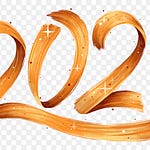

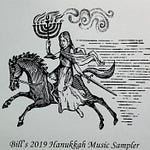
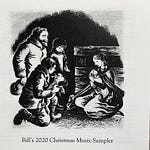

Share this post